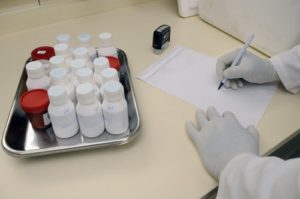Female Fertility Testing
If you’ve been trying to get pregnant for more than a year (or less if you’re over 35) and it’s just not working, the next logical step is to submit to fertility testing.
Female fertility testing can commence as soon as you feel ready to delve into what might be keeping you from conceiving. This testing should be in addition to male fertility testing for your partner, as he could also be the reason you haven’t yet gotten pregnant.
Getting started
 The first step is to find a reproductive medicine specialist – a fertility doctor – who can explain to you all that’s necessary to come to a (hopefully) definitive diagnosis as to your fertility. Once you’ve located a doctor, you’ll schedule an appointment, which will begin with a conversation that seeks information about your medical history and your lifestyle.
The first step is to find a reproductive medicine specialist – a fertility doctor – who can explain to you all that’s necessary to come to a (hopefully) definitive diagnosis as to your fertility. Once you’ve located a doctor, you’ll schedule an appointment, which will begin with a conversation that seeks information about your medical history and your lifestyle.
You’ll need to have at the ready information about your menstrual cycle, birth control methods you’ve used in the past, sexual practices, surgical history, current and past medication use, and any other health issues you’re dealing with now or in the past.
Your doctor will also likely ask you about your environment and lifestyle including questions about work, whether you’re dealing with excessive stress/anxiety or depression, your home life, and more. Some questions might seem a bit intrusive, but they’re necessary in helping reach a diagnosis.
Examination
Next comes a pelvic exam. If you’ve already been to a regular OB/GYN, you are familiar with this exam. The doctor will likely also order blood work (or may have ordered it before your appointment). If nothing obvious stands out, chances are your fertility specialist will begin to order tests that measure ovulation.
Maybe you’ve already been tracking your ovulation. That’s great! Any information you have available can assist the doctor in achieving a diagnosis sooner.
Ovulation testing
Depending on what the doctor views during a physical exam or via bloodwork, any number of tests could be ordered to determine ovarian function and whether ovulation is occurring regularly or at all. Many of these tests center around hormone levels and might include:
- Luteinizing Hormone
- Follicle Stimulating Hormone
- Estradiol
- Progesterone
- Prolactin
- Free T3
- Total Testosterone
- Free Testosterone
- DHEAS
- Androstenedione
Other tests might include ultrasounds, which are simple, painless procedures that allow the doctor to use technology to view the uterus and assess the thickness of the lining, and to check the condition of the ovaries as well. Ultrasounds can also be used to monitor follicle development.
Female fertility testing might also including a cervical mucus test, which determines whether or not the sperm is able to penetrate and survive in the woman’s cervical mucus.
Further testing
If the initial consultation, exam, and first round of tests do not result in a diagnosis, further procedures may be ordered including x-rays that take a closer look at the reproductive organs, a hysteroscopy – which can help better determine abnormalities of or growths in the uterus, or an endometrial biopsy, which can help the doctor to know if the uterine lining is thick enough for the egg to implant there.
Finding the right doctor to perform female fertility testing is essential. Look for an experienced advanced reproductive specialist who is empathetic but professional. You could be working with this individual for many months (or longer), so be sure you are pleased with your selection before you begin any testing.
Go back